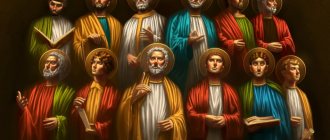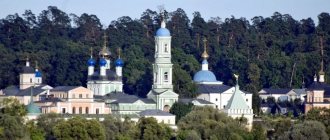People taking their first steps on the path of religiosity often ask the question: “Is it possible to celebrate the Orthodox New Year, which is the most magical celebration of the atheistic past?” The entire population of the Russian Federation is waiting for this holiday, carefully preparing and planning large financial expenses.
The difference between the mentality of secular and Orthodox people is that the latter do not reduce the image of the Almighty to a symbol in the form of an animal or a bird, while the former name the new cycle in honor of some animal.
Modern Church Opinion
This holiday falls during the Nativity Fast, during which the consumption of meat and dairy products is prohibited. Such moderate asceticism goes against the established traditions accepted by secular people.
Today, the New Year has become a symbol of the “cult of consumption” that has triumphed over moderation. Tired of hard work and anxiety, citizens strive to have full entertainment, not giving account of the pious norm and allowing the flesh to commit indecent things.
Orthodox ministers of religion often disdain the celebration of secular holidays and the New Year. For them, it is a demonic and godless triumph, and they can be understood if we look at the situation critically. However, complete denial and seeing only sinfulness in celebration is not entirely correct.
The Orthodox New Year is quite natural if you avoid alcohol consumption and disgusting gluttony. It is necessary to understand that it is not a great holiday, which is dedicated to a spiritual or historical and social event.
The Church calls the New Year an exclusively arithmetic date, which allows one to determine the milestone of earthly existence, sum up achievements and frustrations, and also plan the future.
On a note! In the 20s of the 20th century, the Bolshevik government fiercely fought the tradition of installing and decorating a festive tree for the New Year. The communists associated this evergreen tree with Christmas and, accordingly, religion. Permission for Christmas trees was renewed only in 1935.
New Year among the Slavs
It is worth noting that the word “year” appeared relatively recently in the everyday life of our ancestors. It was brought into the Russian language after the reforms of Peter the Great. Before that, all sources used the word “summer” to designate the year. Therefore, as a holiday, one might say, the Old Slavic New Year did not exist. Instead, the Slavs celebrated the New Year.
And although there is still debate about the day when exactly our distant ancestors celebrated this holiday before the advent of Christianity in Rus', it is definitely known that it was called the New Year. A very popular point of view is that the day when summer began was called the new year. That is, March 21-22, the day of the vernal equinox, another important solar holiday called Komoeditsa. Many of its traditions have survived to this day, having turned into Maslenitsa.
However, a deep study of the semantics of the Russian language of pre-Christian times and existing early Christian sources refutes such an opinion. Primarily due to the fact that our ancestors did not have a separate name for the summer season. For them there was only spring, autumn and winter. From spring to autumn there was work, from autumn to winter there were festivities, and in winter there was rest and, in the case of hungry years, the struggle for life.
However, this does not prevent many different Slavic communities from celebrating the Slavic New Year in the spring. There are also traditions of celebrating the ancient Slavic New Year and on the day of Ivan Kupala, or rather on June 21-22, during the summer solstice. There are also those who celebrate the New Year closer to the now generally accepted celebration, that is, during Kolyada.
In general, it is still impossible to name an unambiguous date when our ancestors celebrated the New Year, based on archaeological finds. From the point of view of culture and religious traditions, most likely this celebration took place on one of the solar holidays. And neither historians nor followers of the ancient Slavic faith have yet come to a clear consensus on which one marked the change of years.
Historical roots
Different human eras celebrated the holiday at different times. This criterion is associated both with historical and political prerequisites, and with the desire to adapt to the movement of the Sun, Moon and other luminaries in the sky.
In the Orthodox tradition there are three New Years.
- The very first was called the Church New Year, it was celebrated on September 1st. On this day, the Messiah entered the sacred synagogue of Nazareth and read the words of the prophet Isaiah, exalting the Lord and His Son. And on September 1, 313, the Great Emperor Constantine defeated his enemy Maxentius and issued a document granting all Christians complete freedom of religion. 12 years later, the tradition of celebrating the New Year on the first day of September appeared.
- The second date falls on January 1 (Old Art.) and was officially approved in the Russian Empire (1700) by a special decree of Peter the Great. He took as a basis the Julian calendar, which was invented during the time of Julius Caesar.
- Now society lives within the framework of the Gregorian calendar, which was introduced by Pope Gregory XIII at the end of the 16th century. During the period of civil strife in 1918, the Bolshevik Party introduced this calendar to counteract the Church and create a kind of “trap” for believers. The latter must abstain when secular society is having fun, dancing and indulges in food. Under the Julian reckoning, the celebration did not run counter to the Nativity Fast, but took place after it.
In all world religions there was a date for the change of eras and times. This shows the subconscious desire of the human soul to feel the relationship between passing time and eternity, which is inherent in us in the absence of worldly suffering.
Each individual needs to see himself within a certain spatial and temporal framework, to know that he is part of a specific era. In this case, it is easier for him to learn from the mistakes of the past and correctly build his own future, living piously and humbly in the present.
Interesting! On January 1, the memory of the Christian martyr Boniface is revered, who admonishes drunkards and hooligans before the Almighty.
According to the chronicles, he suffered martyrdom, showing boundless mercy towards his Christian brothers. With the help of the Guardian Angel, he was able to endure the most terrible tortures until he was put to the sword. Blood mixed with milk flowed from his wounds. What they saw amazed many, and they believed in Christ.
About other Christian saints:
- Life of the Holy Venerable Kuksha of Odessa
- Life of Saint Metropolitan Anthony of Sourozh
- Life of Saint Reverend Alexander Oshevensky
Folk traditions and superstitions
The service of the “new summer” is connected with the prayerful memory of the saints falling on this day: Simeon the Stylite and 40 martyrs who suffered together with their teacher, Deacon Ammon , in the city of Andrianople under the Emperor Licinius .
Venerable Simeon the Stylite with his life in 22 hallmarks. Uglich, 2nd half of the 17th century
In Russia, everyday traditions were associated with the veneration of September 14 (September 1, old style) to the memory of the Venerable Father Simeon the Stylite In the language of the people, this day is called “ Seeds of the Summer ” or simply “ Seeds of the Day ”. The name “summer guide” was given to the day of the Venerable Father Simeon because around this time the end of summer comes, which can be concluded from the folk agricultural sayings: “ Semin’s day is a sower from the shoulders ,” or “ Semin’s day is down with the seeds ” (i.e. . end of sowing), “ On Semin’s day, before lunch, the plow, and after lunch, drive the plowman from the field ” (a hint that with the onset of September days, clear morning weather by noon often gives way to cold and bad weather). The time from Semin Day to September 8th was called “Indian summer” - this is the beginning of women’s and girls’ rural work, since from this day women begin to “stay up” in the evenings. “Semin Day” was an urgent day for the payment of quitrents, duties and taxes, and from this same day all conditions and agreements concluded by peasants among themselves and with merchants usually began and ended.
New Year celebration traditions
Each custom has its own history and carries a specific meaning.
- At the center of the celebration is always the New Year tree - an integral attribute of the holiday. The tradition of decorating houses with fir branches dates back to the time of Peter the Great, who sought to imitate Europe in everything.
- They began decorating the evergreen tree at the end of the 19th century. The custom was taken from the German people. In ancient times, apples, nuts and various homemade toys were hung on Christmas trees. Each such object symbolized something specific.
- In Germany in the 17th century, glass balls appeared, which served as the prototype for today's jewelry. In the city of Lausha in 1867, the first enterprise for the production of Christmas tree decorations was built.
- In Scandinavia, a tradition arose of decorating the top of the tree with the figure of the Savior, which was later replaced by an angel. In the USSR, a red communist star burned at this place. However, in the Christian tradition, the star was associated with the moment of the birth of the Messiah near the city of Bethlehem.
- The fashion for the appearance of jewelry was constantly changing. Shiny tinsel was replaced by toys in silver tones or made of cardboard.
- Not a single New Year is complete without gifts, which are wrapped in beautiful boxes and placed under the tree at night. In the morning they are found by children filled with joy. Legend has it that gifts are brought by Father Frost, whose prototype is St. Nicholas the Pleasant, with his granddaughter Snegurochka. The latter was invented by the writer A. Ostrovsky.
Where did the Christmas tree come from?
The tradition of decorating a fir tree for the holiday originated in Germany. According to legend, the first Christmas trees began to be decorated on this land back in the 8th century. They say that once, in those distant times, Saint Boniface preached to the pagans who lived in the forests and worshiped trees, considering them to be deities. To convince them of the fallacy of this belief, Boniface cut down one of the oak trees considered sacred. When the felled oak fell, it knocked down all the other trees in its path and did not touch only a small Christmas tree. The saint was surprised at this miracle and exclaimed: “Let this tree be the tree of Christ!” Of course, this is just a legend, however, serious researchers unanimously agree that the festive spruce first appeared in Germany, and in its specific region - Alsace.
Written evidence that at Christmas in Alsace they put up small Christmas trees decorated with apples and wafers, but without candles, dates back to the 16th century.
And if in other German lands the custom of hanging Christmas trees or other trees from the ceiling (sometimes with the crown up, and sometimes down) has long been known, then in Alsace from time immemorial it was only spruce, and it was not hung, but rather placed on the floor.
The fact that by the 1770s the Christmas tree already existed in its modern form is evidenced by Johann Wolfgang Goethe. In his novel “The Sorrows of Young Werther,” published in 1774, he writes: “She was putting in order the toys that she had prepared for the holiday for her younger brothers and sisters. He started talking about how happy the kids would be, and recalled those times when unexpectedly open doors and the sight of a decorated Christmas tree with wax candles, sweets and apples brought him into inexpressible delight.”
The custom of decorating the New Year tree came to Russia in several ways. We began to celebrate the New Year by decree of Peter the Great on January 1, 1700. The royal decree said: “On noble and thoroughfares, at gates and houses, make some decorations from trees and branches of pine, spruce and juniper, fire small cannons and rifles, launch rockets and light fires. And for poor people, each one should at least put a tree or a branch on his gate.”
But the real Christmas tree entered Russian homes only a century later, under Empress Alexandra Feodorovna, who became the wife of Emperor Nicholas I in 1817. Small bunches of fir branches became a festive attribute on the tables in the Winter Palace on Christmas Eve, in memory of the former Princess Charlotte's sweet native Prussia, where Christmas trees with burning candles decorated her entire childhood. For a hundred years, the Christmas tree in Russia has become an invariable companion of winter holidays.
But in 1916, Christmas trees on Russian soil suddenly fell into disgrace. There was a bloody war with Germany, and the Holy Synod called on Russian patriots not to install thorny trees in their houses, since they came to us from the German tradition.
And in 1918, the Soviet government also took up arms against the Christmas tree - already as a religious prejudice. Nevertheless, many continued to secretly celebrate Christmas, and now the decoration of the “German” Christmas tree, recently banned by the Synod, became for the Russian people a confession of their faith in Christ.
The tree remained prohibited until the authorities came up with an idea: to celebrate New Year, not Christmas, with a tree. The silver eight-pointed star of Bethlehem at the top of the tree became a red five-pointed one, and under the decorated Christmas trees the country celebrated the new year, 1935 of the Nativity of Christ. This is how the persecution of the Christmas tree in our country stopped, and since then we have been celebrating the New Year and Christmas in its company, not even suspecting how long its historical journey to our homes has been.
Features of the celebration
On New Year's Eve, families gather around a luxurious table decorated with various delicacies. People strive to look formal and dress in new, bright clothes. In secular society, it is customary to celebrate this day on a grand scale, which will create a favorable foundation for the future.
- Nowadays, celebrations in cafes or restaurants are becoming widespread. Professional presenters are invited here, interesting competitions and intriguing events are organized.
- Many people believe that wishes made during the chiming clock come true. Since 1970, Russia has introduced the tradition of congratulations on behalf of the head of state.
- On New Year's Eve, fireworks are launched, coloring the sky with intricate patterns. People walk around the city with sparklers and explode specific firecrackers. This tradition was known back in China and symbolized the expulsion of evil spirits.
On the celebration of other secular holidays:
- About the celebration of March 8
- About Valentine's Day
What is a church year?
This is a cyclical (repeating from year to year) system of fasts, holidays and days of remembrance of saints. The liturgical life of the Church is built on its basis. The annual liturgical circle consists of two types of holidays: fixed and moving (read more about this here). Moreover, the church calendar is arranged in such a way that the first major holiday in the church year is the Nativity of the Virgin Mary, and the last is her Assumption. Thus, the Church symbolically designates at the beginning of the year the first stage of the Incarnation of God, and at the end of the year it remembers the transition of the Most Holy Theotokos into eternal life.







